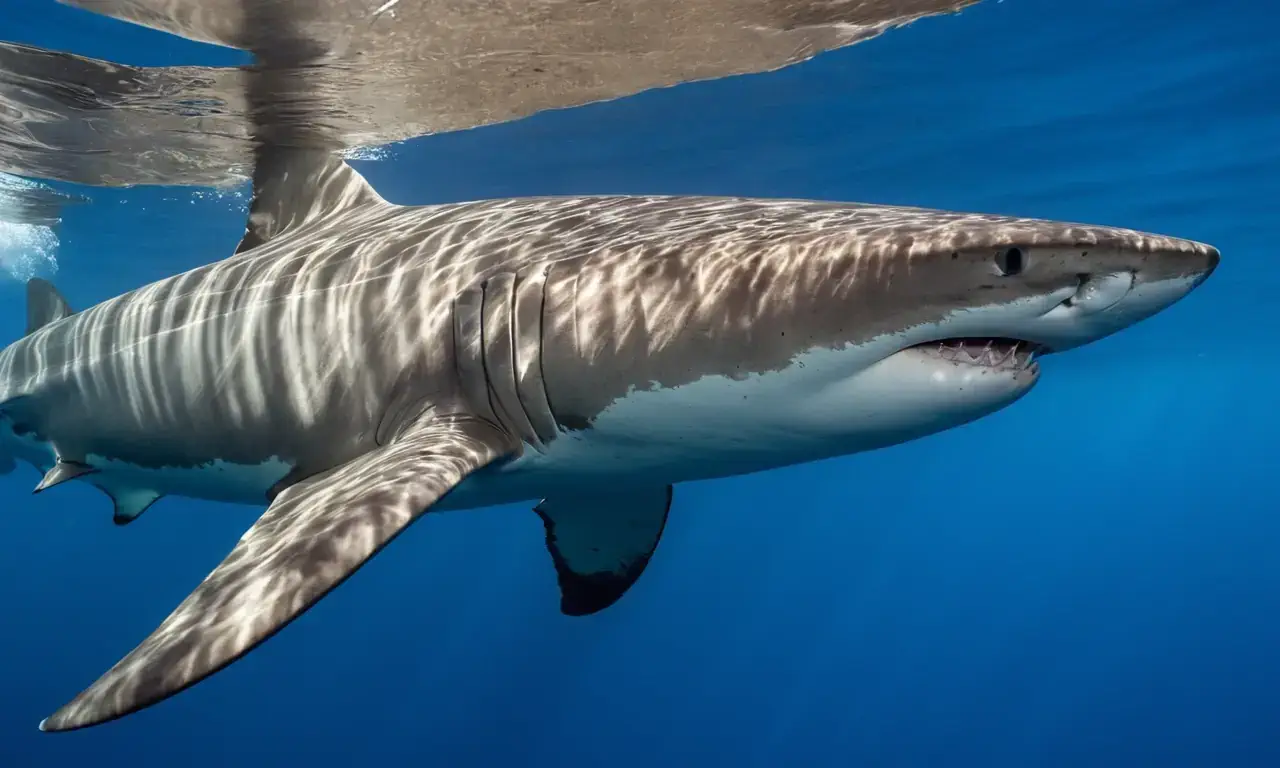
Sharks: Solitary Hunters with Varied Strategies

Sharks are one of the most fascinating creatures in the ocean, known for their powerful presence and diverse behaviors. These marine predators have been a subject of interest for centuries, captivating both scientists and the general public alike. Despite their fearsome reputation, shark real life is often misunderstood, with many people viewing them as mindless killers rather than complex animals that play crucial roles in maintaining the balance of marine ecosystems.
The objective of this article is to delve into the intricacies of life of a shark, exploring various aspects of their behavior, habits, and biology. By examining these elements, we can gain a deeper understanding of what makes sharks tick and how they interact with their environment. From hunting strategies to social behaviors, migration patterns to adaptations, this comprehensive guide will provide an in-depth look at the fascinating world of real life shark.
Hunting Strategies
Sharks are solitary animals that typically hunt alone, with some species forming schools on rare occasions. Their hunting strategies vary greatly depending on their size, shape, and the type of prey they target. For instance, passive hunters like wobbegong sharks use camouflage to ambush prey, often lying in wait near coral reefs or rocky outcrops where fish are more likely to congregate. This stealthy approach allows them to catch unsuspecting victims off guard.
On the other hand, active hunters like great whites employ a different tactic. These powerful predators use speed and agility to chase down their prey over long distances. Great whites have been observed breaching the water's surface in pursuit of seals or sea lions, showcasing their incredible acceleration and maneuverability. This level of athleticism is unmatched among most shark species, making them formidable hunters.
Some shark species have been observed cooperating in hunts, such as sevengill sharks working together to take down large fur seals. These cooperative hunting strategies are less common but offer a glimpse into the complex social dynamics within shark populations. By studying these behaviors, researchers can gain insights into how different shark species interact with each other and their environment.
Contrary to popular belief, not all sharks do live solitary lives. While many species prefer to hunt alone, some exhibit complex social behaviors that are worth noting. For example, some species of hammerhead sharks have been observed forming large aggregations during mating seasons or when feeding on specific prey items. These gatherings can be quite impressive, with hundreds of individuals coming together in a single location.
However, these social interactions are often short-lived and do not necessarily translate to long-term relationships between individual sharks. In fact, many shark species exhibit territorial behavior, where they fiercely defend their personal space from other members of the same or different species. This territoriality can lead to conflicts over resources such as food or mating opportunities.
Despite these observations, it's essential to remember that shark life is incredibly diverse, and not all species behave in the same way. Some sharks are known to form long-term pair bonds, while others may engage in complex courtship rituals before mating. Understanding these social dynamics can provide valuable insights into how sharks interact with their environment and each other.
Migration Patterns
Sharks are known to migrate over vast distances in search of food, mates, or suitable habitats. These migrations often follow the annual patterns of other marine animals, such as fish schools or sea turtles. For instance, some species of tiger sharks have been tracked migrating thousands of miles across entire ocean basins in pursuit of their preferred prey.
These migrations are not just random movements; they often involve complex navigational strategies that allow sharks to return to specific locations year after year. Some researchers believe that sharks may use magnetic fields or even the Earth's gravitational field to guide their journeys, although more research is needed to confirm these theories.
Understanding shark daily migration patterns can provide valuable information on how these animals interact with their environment and other marine species. By studying these movements, scientists can better comprehend the ecological roles that sharks play in maintaining the balance of marine ecosystems.
Adaptations

Sharks have evolved an array of adaptations to thrive in a wide range of aquatic environments. One of the most striking examples is their ability to survive in both warm and cold waters. Some species of sharks are found in tropical regions, while others inhabit polar or temperate zones, showcasing their remarkable adaptability.
Another notable adaptation is the development of specialized senses that allow sharks to detect prey from a distance. Many shark species possess electroreceptors called ampullae of Lorenzini, which enable them to detect the electrical signals produced by other animals. This unique sense allows sharks to locate and track their prey more effectively than many other predators.
Furthermore, some sharks have evolved remarkable physical adaptations that enhance their hunting abilities. For example, the spined pygmy shark has a long snout that is lined with tiny teeth, perfect for catching small fish in tight spaces. These diverse adaptations demonstrate the incredible flexibility of shark life, allowing them to thrive in various ecological niches.
Prey Selection
Sharks are apex predators and have evolved to feed on a wide variety of prey items. The specific diet of a shark species often depends on its size, shape, and the environment it inhabits. For instance, smaller sharks like the dwarf lanternshark primarily feed on small fish and invertebrates, while larger species like great whites target larger prey such as seals or sea lions.
Some sharks are opportunistic feeders, meaning they will consume whatever is available to them. This flexibility allows them to adapt to changing environmental conditions and exploit new food sources when necessary. However, other shark species exhibit more specialized feeding behaviors, where they focus on specific types of prey that provide the most nutritional benefits.
Understanding what do sharks do in terms of their dietary preferences can offer insights into how these animals interact with their environment and other marine species. By studying the feeding habits of different shark species, researchers can better comprehend the ecological roles that sharks play within marine ecosystems.
Feeding Habits
Sharks have evolved a range of feeding strategies to capture their prey. Some species are active predators, using speed and agility to chase down their meals, while others employ stealthy tactics like ambush hunting or scavenging for carrion. The feeding habits of sharks can also be influenced by the availability of food in their environment.
For example, some shark species have been observed engaging in a behavior known as "scavenging," where they feed on dead animals that have washed up on beaches or are floating in the water column. This opportunistic feeding strategy allows them to capitalize on available resources without expending energy on hunting live prey.
Moreover, sharks exhibit different feeding behaviors depending on their age and size. Younger sharks may require more frequent meals due to their high metabolic rates, while larger individuals can survive for longer periods between feedings. Understanding these feeding habits is crucial for managing shark populations and mitigating potential conflicts with human activities.
Conservation Status
Many shark species are facing significant threats to their survival due to various human activities such as overfishing, habitat destruction, and pollution. As a result, many sharks are listed on the International Union for Conservation of Nature (IUCN) Red List, indicating that they are vulnerable or endangered.
The main threat to shark life is overfishing, which has led to significant declines in shark populations worldwide. Many species are targeted for their fins, which are highly valued in some cultures and used in traditional medicine. This demand has resulted in the devastating practice of finning, where sharks are caught, have their fins removed, and then discarded back into the ocean.
Efforts to conserve shark populations include establishing marine protected areas, implementing catch limits, and promoting sustainable fishing practices. However, more needs to be done to address the scale and complexity of these threats and ensure the long-term survival of shark species.
Conclusion
Sharks are fascinating creatures that continue to captivate scientists and the general public alike. Their incredible diversity in terms of size, shape, and behavior highlights the complex nature of shark life. From their remarkable adaptations to their varied feeding strategies, sharks play a vital role in maintaining the balance of marine ecosystems.
However, many shark species are facing significant threats due to human activities, emphasizing the need for conservation efforts to protect these apex predators. By studying the biology and ecology of sharks, we can better understand how they interact with their environment and other marine species, ultimately informing strategies to conserve and manage shark populations for future generations.
Ultimately, what do sharks do is not just a question about their behavior; it's also a reflection of our responsibility as humans to protect these incredible animals and the ecosystems they inhabit.
Leave a Reply





Related Links